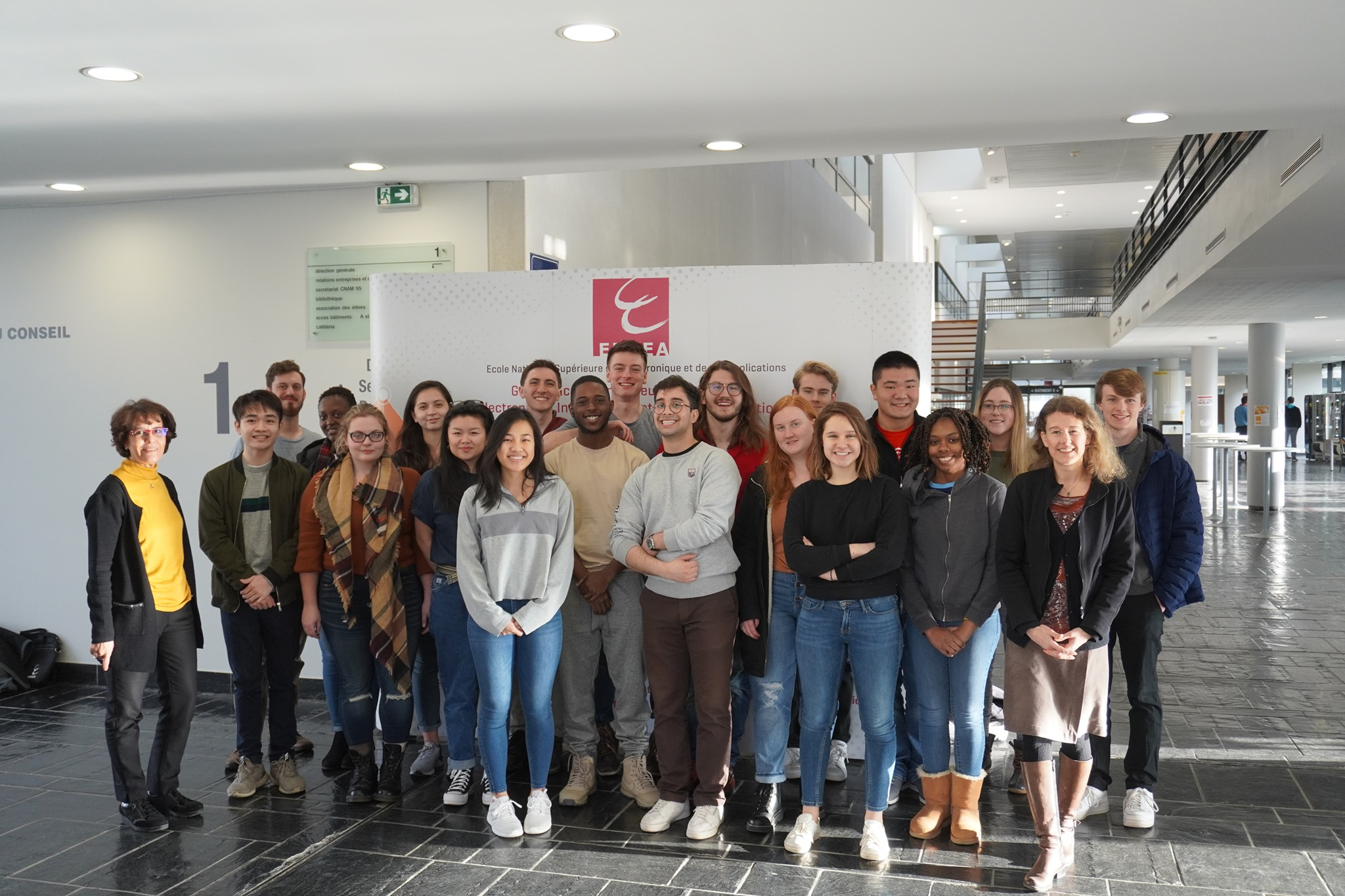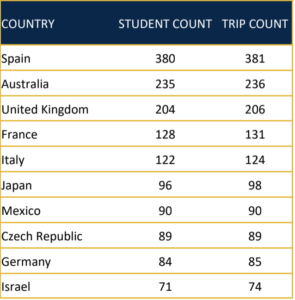
Michigan student Caroline Nguyen on a study abroad program in France during Winter 2020
Richa Patwa spent almost two months in a study abroad program in Spain in early 2020 before her classes came to a halt amid the spread of the coronavirus.
More Info
The plan was to stay an entire semester, until May last year, at the Universidad de Pontificia Comillas in Madrid, but the U.S. Center for Disease Control and Prevention recommended that colleges cancel foreign exchange programs, thus U-M asked its students living abroad to return home. She had no other choice.
An industrial and operations engineering and computer science graduate student of the University of Michigan, Patwa was in a program designed for engineering students interested in getting international experience while taking engineering courses in English and Spanish culture and language classes.
“Despite getting cut short, my experience in Spain was definitely worth it,” Patwa said. “The things I got to experience, people I met and lessons I learned are 100% things that will stick with me wherever life takes me.
“Throwing myself into a different country allowed me to learn a lot about myself, taught me to take on new challenges, what kind of person I am and in which ways I thrive and find happiness.”
Patwa is among the 1,547 U.S. students who participated in education-abroad programs during 2019-20 for academic credit. This data—the most recent academic year with complete statistics—placed U-M as the No. 2 Big Ten university and No. 5 in the nation overall, according to the annual Open Doors report by the Institute of International Education, a New York-based nonprofit.
The spread of COVID-19 significantly disrupted U-M education abroad during the winter 2020 semester, including U-M-managed study abroad programs and student group travel.
“For many institutions across the United States, the ability to support and enable international experiences had slowed to a crawl during the pandemic,” said Valeria Bertacco, U-M vice provost for engaged learning.
Of U-M students who had planned to be abroad, only about 21% could complete their programs, 8% had programs canceled before departure, and the remaining 71% had to leave their host sites mid-program and complete their work remotely.
“Overall, the volume of international travel has decreased for everyone,” Bertacco said. “However, during the past year, U-M has pursued many opportunities for virtual engagements and experiences.
“Currently, we are seeing that the demand by students for international experiences is even higher than it was before the pandemic took over. The pandemic gave us the opportunity to revise and strengthen our safety protocols, which I hope will allow us to move forward with most of the programs abroad in the planning for 2022.”
Transitioned to virtual
After months of planning, computer engineering graduate Caroline Nguyen landed in France last January for her dream study abroad experience.
Nguyen went to Cergy-Pontoise, a university town about 40 minutes from Paris, to be part of a French American Exchange Program. The curriculum allows students to take engineering courses in English and immerse in French culture through the language courses and leisure activities with classmates.

“A big reason why I came to Michigan was that I knew U-M has ranked for years in the top 10 of U.S. institutions for participation in academic programs abroad,” Nguyen said. “I always wanted to have that experience.”
In March 2021, after spending two months deeply engaged on campus at ENSEA, a French graduate school focusing on electrical and computer engineering and telecommunication, Nguyen was forced to return home due to the pandemic.
“I couldn’t believe my trip was shortened,” Nguyen said. “We had to quickly go back home and switch our in-person program to virtual. All my classes tried to make their schedules synchronous. But it was challenging; it was different. We were all in different time zones. But even though it was cut short, I felt like I had a good time.”
Study abroad alternatives
The pandemic forced institutions and students to explore different scenarios for international experiences and made virtual engagements more practical and welcome. Bertacco said.
“A student may pursue a hybrid international program, where they may go to the foreign location for a shorter period, and then complete their experience through a virtual engagement with the same classmates, co-workers or researchers,” she said. “The pandemic has forced us all to embrace virtual connections and experiences as a prime means of engagement. Today, hybrid experiences are welcome and accepted, opening the door to a whole new family of opportunities for our students.”
More international data
Although the Open Doors report—commissioned by the U.S. State Department—is a complete census of education abroad in the United States, the study does not provide a total count of U-M students who have gone overseas.
Not included in the report are students who are not U.S. citizens. Also excluded are those who go abroad for non-credit educational experiences, such as some internships, volunteer projects, research and performances.

Including these students in the total education-abroad tally, U-M had 2,372 overseas in 2019-20—825 more students than in the Open Doors report. These students participated in 2,463 trips, indicating that many U-M students engaged in multiple international experiences.
U-M students traveled to 111 countries during this period. The top three destinations were Spain, Italy and the United Kingdom.
“When I now reflect on my trip and my current job, neither of which ended up going exactly the way I had anticipated before COVID, I just try to constantly remind myself to take advantage of every opportunity that I have in front of me to learn as much as I can and grow,” said Nguyen, who now works as an associate software engineer.
Patwa, who went to Spain for her study abroad program, had similar takeaways.
“At first, I was hesitant about leaving the norm that was Ann Arbor and facing an international experience,” she said. “But I quickly realized that this was truly a once in a lifetime opportunity and I would never again get to travel to experience school and life in another country.
“I would recommend an abroad experience to anyone that asked me. It is a change but a change in the best way possible. There will always be more semesters left in the norm your college city is, but a unique chance to experience school in a different country is something one will never forget.”


